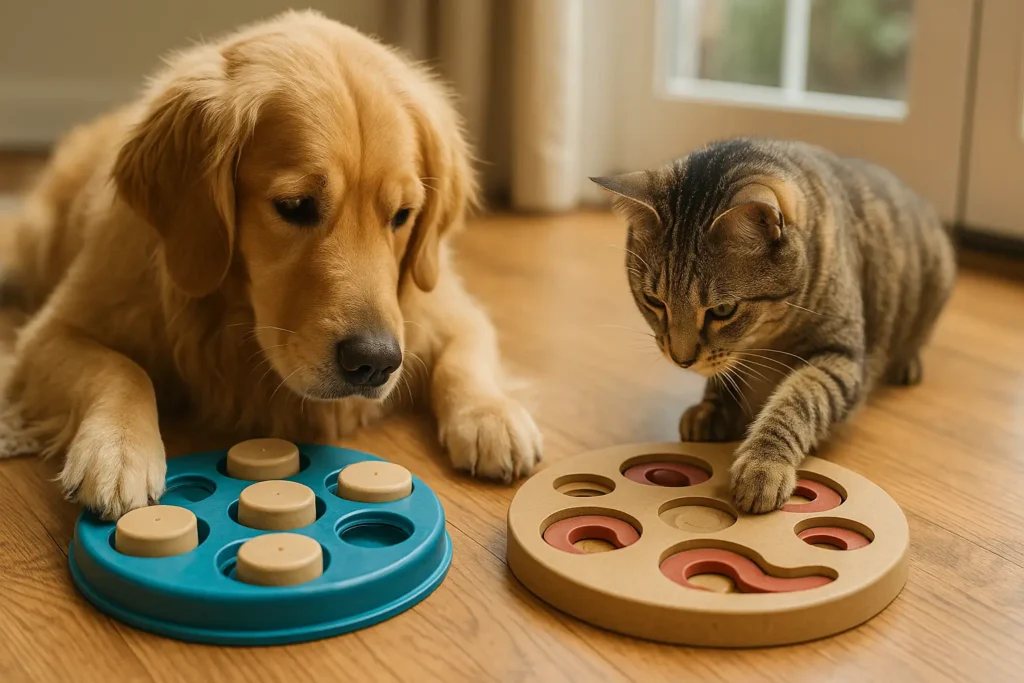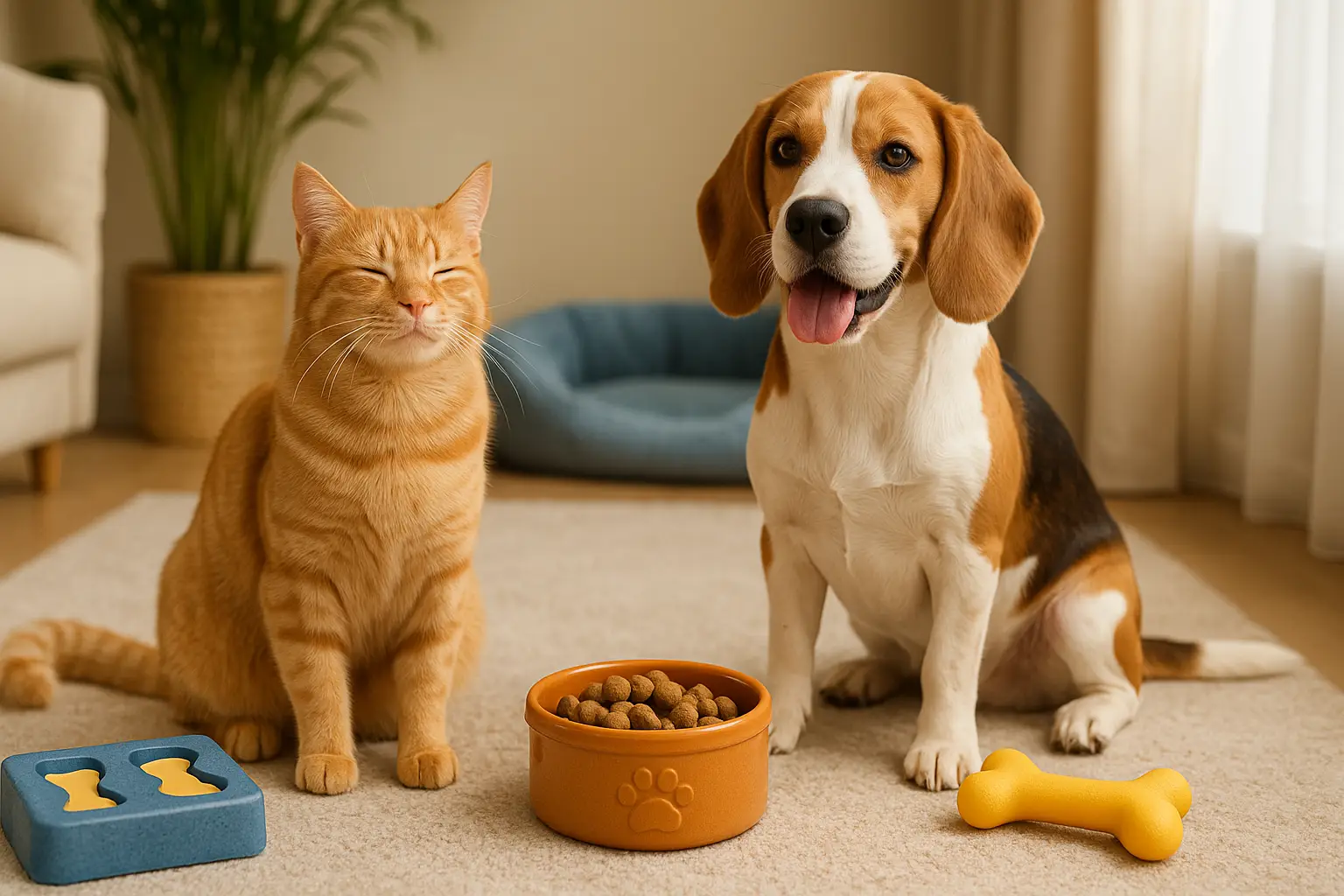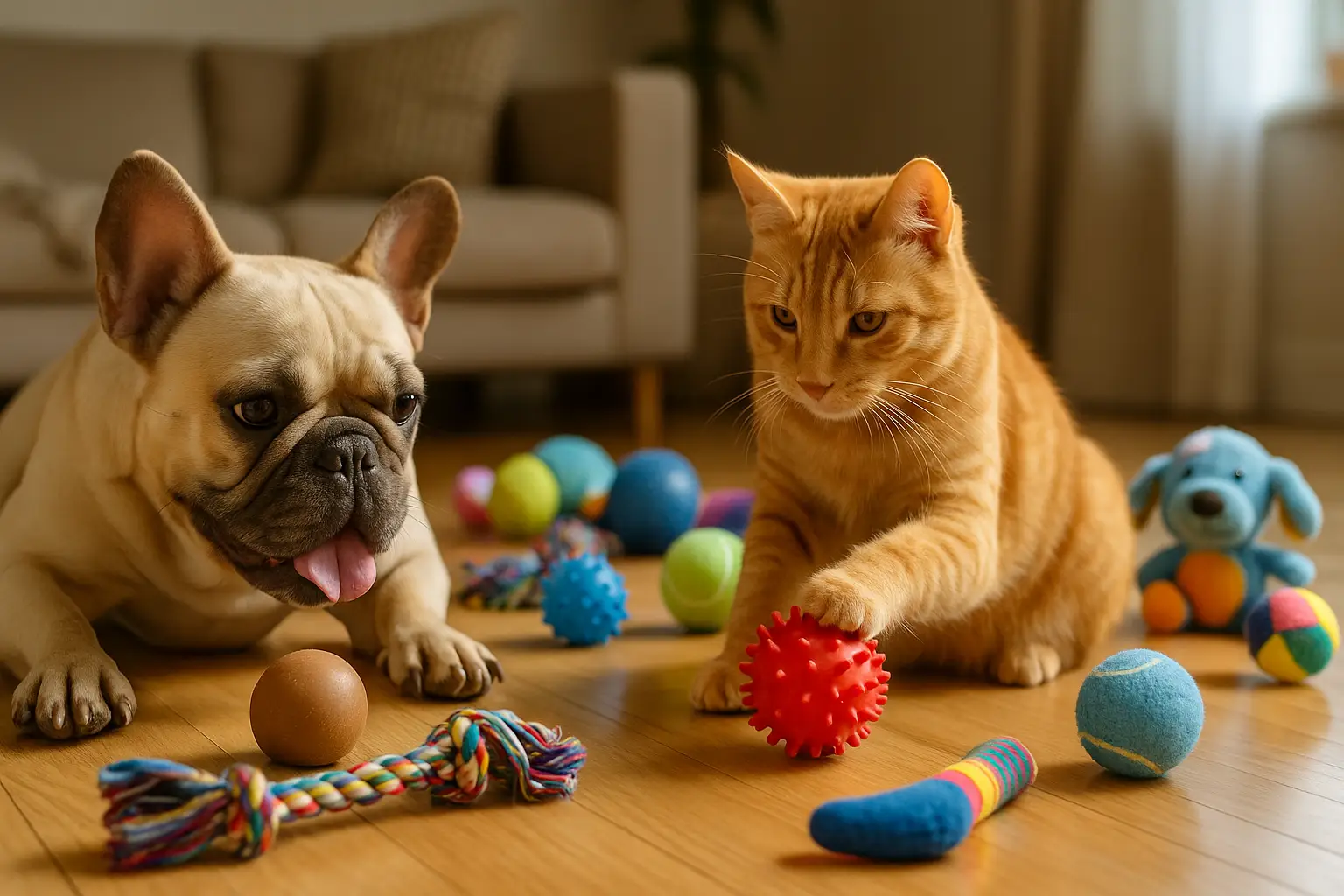How to Keep Your Pet Mentally Stimulated Every Day
Just like humans, dogs and cats need more than food, water, and a comfy place to sleep—they need mental stimulation. When their minds are engaged, pets are happier, more obedient, and far less likely to act out with boredom-driven behaviors.
Mental stimulation for pets isn’t about making them tired—it’s about making them fulfilled. It taps into their instincts to explore, solve problems, and interact with their environment in meaningful ways.
This article offers simple, effective ways to add mental exercise into your pet’s everyday life, whether you have a curious cat, a high-energy pup, or a senior pet looking for gentle enrichment.

Why Mental Stimulation Is Essential for Pets
Mental health is just as important as physical health.
Benefits of Mental Stimulation:
- Prevents boredom-related behavior like chewing or scratching
- Improves obedience and focus
- Builds confidence in shy or anxious pets
- Reduces destructive tendencies when home alone
- Supports cognitive health in aging pets
- Deepens the bond between pets and their humans
When the mind is active, the body and spirit thrive too.
Step 1: Understand Your Pet’s Mental Needs
Every animal has a different “thinking style.”
Dogs:
- Thrive on problem-solving, scent work, and structured interaction
- Certain breeds (border collies, shepherds, retrievers) need higher stimulation
- Benefit from short training bursts and task-based games
Cats:
- Love to stalk, chase, climb, and explore
- Use sight, sound, and scent to engage with their world
- Prefer short, spontaneous sessions of play or puzzle-solving
Knowing your pet’s natural behavior helps you design the right stimulation strategies.
Step 2: Make Mealtime an Enrichment Opportunity
Food is one of the easiest tools for mental work.
Ideas:
- Puzzle Feeders: Encourage pets to work for their meals
- Snuffle Mats: Great for scent-driven stimulation (especially for dogs)
- Slow Feed Bowls: Engage problem-solving instincts
- Food Dispensing Toys: Keep them occupied and thinking
- Scattered Feeding: Toss kibble across a room or yard to spark foraging
Don’t feed only from a bowl—let mealtime become a mission.
Step 3: Rotate Toys and Introduce Novelty
A toy that’s always available becomes boring.
Tips:
- Keep 3–5 toys out at a time
- Rotate new toys weekly
- Use different textures, sounds, and shapes
- Combine store-bought and DIY options
- Hide toys in new places to spark interest
For cats, add new vertical spots or hiding tunnels as “toy environments.”
Step 4: Use Training as Mental Workouts
Training isn’t just for obedience—it’s powerful brain engagement.
Dogs:
- Practice basic cues (sit, stay, down) in new places
- Teach fun tricks like spin, bow, or wave
- Work on scent-based tasks (e.g., find the toy or treat)
- Use clicker training for clear communication
Cats:
- Teach touch-targeting or sit using treats and clickers
- Practice crate training or leash walking
- Use mealtime to reinforce behaviors like “paw” or “high five”
5–10 minute sessions a few times daily are more effective than one long one.
Step 5: Play Structured Games
Games aren’t just for fun—they engage instinct and thought.
Game Ideas for Dogs:
- Find It: Hide treats around the house
- Which Hand?: Hide a treat in one hand and let them guess
- Shell Game: Use three cups to hide a treat and move them
- Name That Toy: Teach the names of toys and ask for them
- Fetch with a Twist: Use multiple objects or add cue variations
Game Ideas for Cats:
- Chase the Feather: Use wand toys to mimic prey
- Laser Follow: Add a treat at the end for reward
- Ball Trackers or Motorized Toys: Stimulate sight and movement
- Cardboard Box Games: Cut holes and hide toys inside
- Hunt and Pounce: Toss treats across the room
Games should mimic natural behaviors—chasing, digging, stalking, retrieving.
Step 6: Offer Safe Exploration Spaces
A new environment is full of brain stimulation.
Dogs:
- Walk different routes
- Visit new parks or trails
- Use car rides to expose them to sights and smells
- Build backyard exploration zones with sand, scents, or toys
Cats:
- Create a catio or window perch for bird-watching
- Use cardboard boxes as mini-adventures
- Let them explore different rooms under supervision
- Use scent swatches (lavender, mint, etc.) for controlled sniffing
Exploration doesn’t have to mean chaos—just curated novelty.
Step 7: Encourage Social Interaction (When Safe)
Social learning and engagement enrich the mind.
For Dogs:
- Schedule dog playdates (with known, friendly dogs)
- Visit pet-friendly stores
- Attend training classes or agility groups
- Let them interact on-leash in safe settings
For Cats:
- Some cats enjoy short visits from guests
- Introduce new (calm) pets with slow socialization
- Provide video play (birds, fish, other cats)
- Mirror games or mutual grooming sessions with familiar humans
Read your pet’s signals—some are social learners, others are solo thinkers.
Step 8: Try Scent Work and Sensory Games
Smell is a dominant sense for most animals.
Dog Scent Games:
- Hide a treat in one hand and ask them to sniff it out
- Place treats inside boxes with different scents
- Try nosework kits or DIY challenges
- Use essential oils on cloths (lavender, vanilla—pet-safe only)
Cat Scent Games:
- Rub different scents on toys (catnip, valerian root, silvervine)
- Offer safe herbs or flowers in mesh balls
- Create “scent trails” between rooms with kibble
Scent stimulates memory, instinct, and decision-making.
Step 9: Give Daily Problem-Solving Tasks
Challenge their brains with small puzzles every day.
Examples:
- Fill a muffin tin with balls and hide treats underneath
- Stack cups or boxes with rewards inside
- Wrap treats in fabric knots
- Use interactive treat-dispensing balls or boards
- Offer a closed cardboard box with paper balls and one food reward
Watch your pet light up as they work to solve the mystery.
Step 10: Engage Through Observation and Conversation
Even downtime can be mentally rich.
Ideas:
- Talk to your pet in different tones and see their reactions
- Observe body language and try “mirroring”
- Read books aloud to them during quiet time
- Play soft background music or ambient pet-focused soundtracks
- Watch their favorite view (squirrels, traffic, kids walking by)
The mind engages even in stillness.
Step 11: Adapt for Seniors or Low-Energy Pets
Older pets still need stimulation—just gentler and slower.
Low-Impact Activities:
- Slow food puzzles
- Gentle scent games
- Clicker training from a mat
- Massage or grooming with soft praise
- Name recognition and response games
Keep sessions short but consistent to prevent cognitive decline.
Step 12: Avoid Overstimulation
Too much of a good thing can backfire.
Warning Signs:
- Pacing or panting
- Ignoring cues
- Growling, swatting, or hiding
- Hyperactivity or inability to settle
- Yawning, licking lips, or dilated pupils (stress signals)
Give breaks between sessions and balance play with quiet.
Final Thoughts: A Stimulated Mind Is a Happy Pet
Mental enrichment isn’t about being busy—it’s about being connected. When your dog or cat gets to solve, explore, and express their instincts daily, their stress decreases, their behavior improves, and their joy deepens.
Start small. One game, one puzzle, one sniff walk. Over time, you’ll create a life where stimulation is built into every day—naturally and joyfully.
Because when your pet thinks, learns, and thrives… your bond becomes unbreakable.




Post Comment